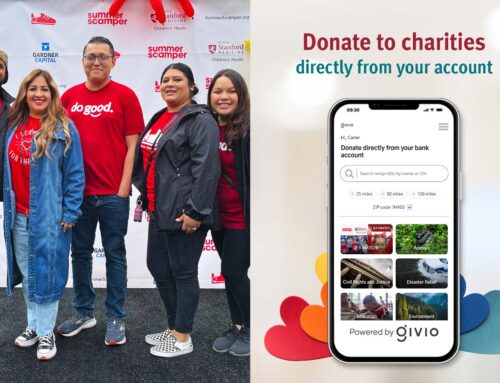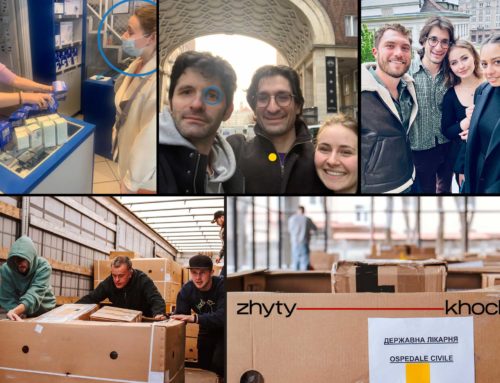Part 1. Workplace giving raises $5 Billion a year for charity. Yet sadly, that falls way short of the potential. In this four-part series, I am taking a deep dive into workplace giving. What are the numbers? The opportunities? What do nonprofits need to know, as well as companies? Most importantly, though, I’m going to explain why crowdfunding is the solution to revitalizing workplace giving and how we do it.
So let’s get started. I hope you will join me on this important journey …
Charitable Giving has a Problem
Part 1 of our 4-Part Series: Crowdfunding for the Workplace
COVID, the economy, loss of in-person events, fewer checks, donors aging out, workers displaced – regardless of the cause, we have a serious fundraising problem. The industry is being completely disrupted. Donor bases everywhere are shrinking. Our communities and our charities need us – more than ever. So what do we do?
Good luck if you are waiting for that next million-dollar donor to make up the difference. Instead, let’s refocus on something that was old, but could be new again. Workplace giving. And let’s renew workplace giving by injecting a serious dose of crowdfunding.
Crowdfunding campaigns will open donor doors you never even knocked on.
3 keys to fundraising
Volumes of fundraising advice continue to be written. That’s good – we all need to learn from the experts and each other. Whenever I am in the midst of a fundraising plan, no matter how simple or complex, no matter the industry, I always give it a gut-check against 3 key principles:
- People give to people who ask.
- Successful fundraising tells a story about why we should give in order to create an emotional connection between donor and cause.
- Once the connection is made, capture the gift as fast as possible.
Keep these 3 keys in mind as we talk about both workplace giving and crowdfunding. I’ll circle back to them from time to time.
The numbers
In 2019 individual US donors gave more than $300 Billion to charity. Early 2020 giving data reported in The Chronicle of Philanthropy suggests that over 40% of charities experienced a decrease in giving. A similar percentage expects further declines in 2021. An even more alarming trend is that large nonprofits raised more, but smaller nonprofits raised a lot less. COVID hit hard in so many ways.
Most of our individual giving comes from working Americans. In fact, the typical American gives about $2,000 a year to between 5 and 10 different charities. That is a lot of support to a lot of charities.
Most donors also work for a living. We know that small and mid-sized businesses employ over 60% of working Americans and generate roughly 67% of new jobs.
But did you know that average annual giving by a person who gives through the workplace is $500 – $700? That is much more than most other channels for individual donor fundraising. For example, a typical online donation is $80 – $120.
So how much do we raise from the workplace? Between individual donations and occasional matching funds, workplace giving accounts for $5 Billion. In other words, less than 2% of that $300 Billion in annual giving. Wait – what?
Let’s go through that again. Charitable giving is in a state of disruption. Our largest donor segment is working Americans. Check. Most workers are employed by small and mid-sized business. Check. Small and mid-sized business continues to create the majority of new jobs. People who give through the workplace tend to give more than through any other fundraising channel. Check, check.
So why are we raising so little money through the workplace?
See how you can get started crowdfunding with Givio in 3 minutes or less.
Looking back at workplace giving
Workplace giving has been around for decades, ever since United Way made it a fundraising staple in our communities post-WWII. But workplace giving – which is responsible for $5 Billion or more in giving every year – has always been an “enterprise activity”. What does that mean, “enterprise activity”?
It means that for decades, we focused on workplace giving in the most efficient ways that we could. United Way – who led the charge – engaged our largest companies to engage their large workforces to give to charity. In fact, nonprofits left the realm of the workplace largely to United Way. Manufacturing and finance produced the largest workplace giving campaigns for decades. Plus the federal government. And then our largest consulting and tech companies. The workplace was a very efficient channel through which to market and from which to collect donations.
But a lot has changed over the past 20 years.
What changed?
Employees demanded more giving choices. We began creating different types of giving programs. Giving became automated – a blessing and a curse. New “enterprise” software platforms largely automated old giving processes, like payroll deduction, without offering much in the way of true innovation.
Who remembers any of these names: CharitableWay, KindMark, CreateHope, 4Charity, CoreMatter, JK Group, United-eWay, AmeriGives, Truist, YourCause, GoodDoneGreat? Over the past 20 years, all of them designed software to automate payroll deduction giving. Some also focused on matching, disaster response, and volunteering. But the core of their solutions was handling HR data to enable recurring payroll deduction giving. Even today’s CSR software leaders like Benevity, Blackbaud, and CyberGrants depend upon HR data exchanges.
As employee-donors lost interest (participation rates fell below 20%), companies responded with incentives, like more matching gifts and dollars-for-doers. But billions of dollars of corporate matching funds go unredeemed every year. And large companies still do not contribute more than ~1% of net profits to charity, even with the global call to CSR.
Companies also began focusing on volunteering as an alternative to giving. Today, many large companies seem torn between responding to the very local giving concerns of their employees and implementing global volunteering programs that demonstrate they are good global citizens.
The loss of leadership
Perhaps most concerning, however, is the fact that we have lost the great champions for workplace giving. No longer do we see NFL-United Way partnership ads reminding us of the importance of giving to our communities. I can’t remember the last time the President of the United States gave a speech in support of the Combined Federal Campaign (yes, that used to happen … really!).
Run a workplace giving program with Givio + Slack. Get up and running in 3 minutes (or less.)
And for a host of reasons, the single largest workplace campaign in the country – the Combined Federal Campaign – raises one-third of the $280M it raised just 10 years ago. Is this because workers don’t care about charity anymore? Of course not.
If I had to sum up the past 20 years of workplace giving – and I know I sound like a cynic as I write this – I’d say that we substituted (poorly designed) automation for leadership.
What can we do?
Plenty. We live and work in an age of “Corporate Social Responsibility”. If we are going to take the promise of CSR seriously, then we need solutions and innovation that enable companies of all sizes and employees in all types of jobs to share in that promise. Like crowdfunding for the workplace does. If nothing else, those average giving numbers and the potential for matching should create a laser-focus on the workplace.
But before we can talk solutions, we need to address a very important issue: donor expectations. So that’s where we turn.
Next up in our 4-part series: Part 2: What Does a Donor Expect?
(and spoiler alert, I promise to circle back to the leadership vacuum in Part 4)




